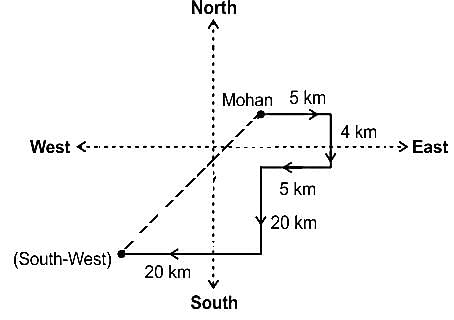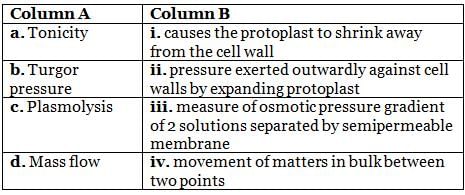CSIR NET Life Sciences Mock Test - 6 - CSIR NET Life Science MCQ
30 Questions MCQ Test - CSIR NET Life Sciences Mock Test - 6
Direction: Choose the correct alternative that will continue the same pattern and replace the question mark in the given series.


A fair had an entry fee of Rs. 1000. Later, it got reduced by 25% which in turn increased the total amount received by 20%. Find the percentage increase in the number of people entering the fair.
| 1 Crore+ students have signed up on EduRev. Have you? Download the App |
Mohan walks 5 meters towards East and then turns to his right, walks 4 meters and then again turns to his right and walks 5 meters. Now he turns left and walks 20 meters. He once again turns to the right and walks an additional 20 meters to reach the theater. In which direction is the theater in the context of Mohan's starting point?
Find the area of a square, one of whose diagonals is 3.8 m long.
Which of the following is known as the “window of the brain”?
Which of the following names is appropriate for the sequence 5' -G/ANNAUG -3' in a mammalian mRNA?
Which of the following was listed as one of the vulnerable species by the International Union for Conservation of Nature?
Out of the following, which technique detect single nucleotide polymorphism?
Name the hormone which takes part in the release of FSH and LH from the anterior pituitary.
The lens and the retina of the vertebrate eye are developed from:
Which of the following tissue develops from the ectoderm of the embryo?
External genital organs are developed during:
Process of gastrulation in frog is more complicated than in Amphioxus due to presence of:
Which crop variety is not due to induced mutations?
An essential requirement of an artificial medium in which explant is being regenerated is:
Which of the following is a type of RNA involved in protein synthesis?
1. snRNA
2. rRNA
3. yRNA
4. dsRNA
Phylogeny is defined as the study of evolutionary lineages of a species, or taxa. It is studied by drawing phylogenetic trees. Following are the statements about them-
P). A phylogenetic tree is also known as cladogram that represents evolutionary relationships among organisms or taxa.
Q). The pattern of branching in a phylogenetic tree reflects how species or other groups evolved from a series of common ancestors.
R). In trees, two species are less related if they have a more recent common ancestor and more related if they have a less recent common ancestor.
S). Phylogenetic trees are hypotheses, not definitive facts.
Which of the following are correct?
With respect to the “tails” of the histone molecules which of the following is not true?
The inactive conformation of a G-protein coupled receptor is stabilized by ______________








 = 0.48x
= 0.48x
















